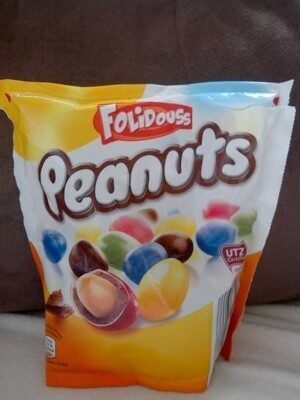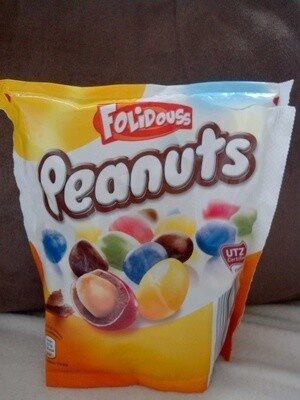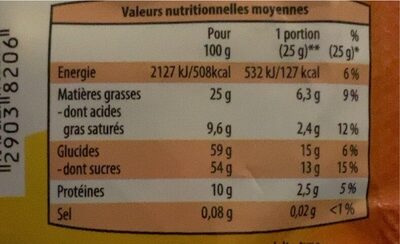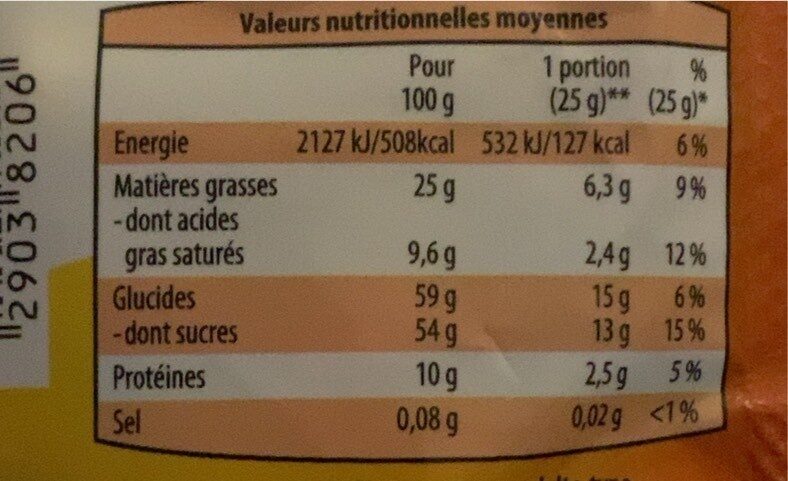Peanuts - Folidouss - 400 g
Ambiguous barcode: This product has a Restricted Circulation Number barcode for products within a company. This means that different producers and stores can use the same barcode for different products.
×
This product page is not complete. You can help to complete it by editing it and adding more data from the photos we have, or by taking more photos using the app for Android or iPhone/iPad. Thank you!
×
Barcode: 29038206
Quantity: 400 g
Brands: Folidouss
Categories: Plant-based foods and beverages, Plant-based foods, Legumes and their products, Snacks, Legumes, Sweet snacks, Cocoa and its products, Confectioneries, Nuts and their products, Chocolate candies, Nuts, Bonbons, Chocolate covered nuts, Peanuts, Chocolate covered peanuts
Labels, certifications, awards:
Sustainable farming, Green Dot, No colorings, UTZ Certified, UTZ Certified Cocoa

Manufacturing or processing places: Allemagne
Stores: Aldi
Matching with your preferences
Environment
Carbon footprint
Packaging
Transportation
Labels
Report a problem
Data sources
Product added on by openfoodfacts-contributors
Last edit of product page on by naruyoko.
Product page also edited by date-limite-app, kiliweb, packbot, quechoisir, roboto-app, sebleouf, stivolonski, trantre, yuka.SDVFU0lyUWluL291bTg4VDVVL3IrdDliN0xxRFlFNk9BT0V3SUE9PQ, yuka.YjdBbkVQUTdndll2bmZJNC9qck94OUIzMTRDbWMzS2xFc0U0SVE9PQ, yuka.sY2b0xO6T85zoF3NwEKvlhdnCIX--zCYJRXTi0eJnuq3E5Pyef1309PXb6s, yuka.sY2b0xO6T85zoF3NwEKvlkpicNTMk2LoNRL4t0ya3vaRdoP3UdpquIPlN6s, yuka.sY2b0xO6T85zoF3NwEKvlnFfDNHUkGreGkTkvmapmOzVHMexf-1I7LHAPqs.











